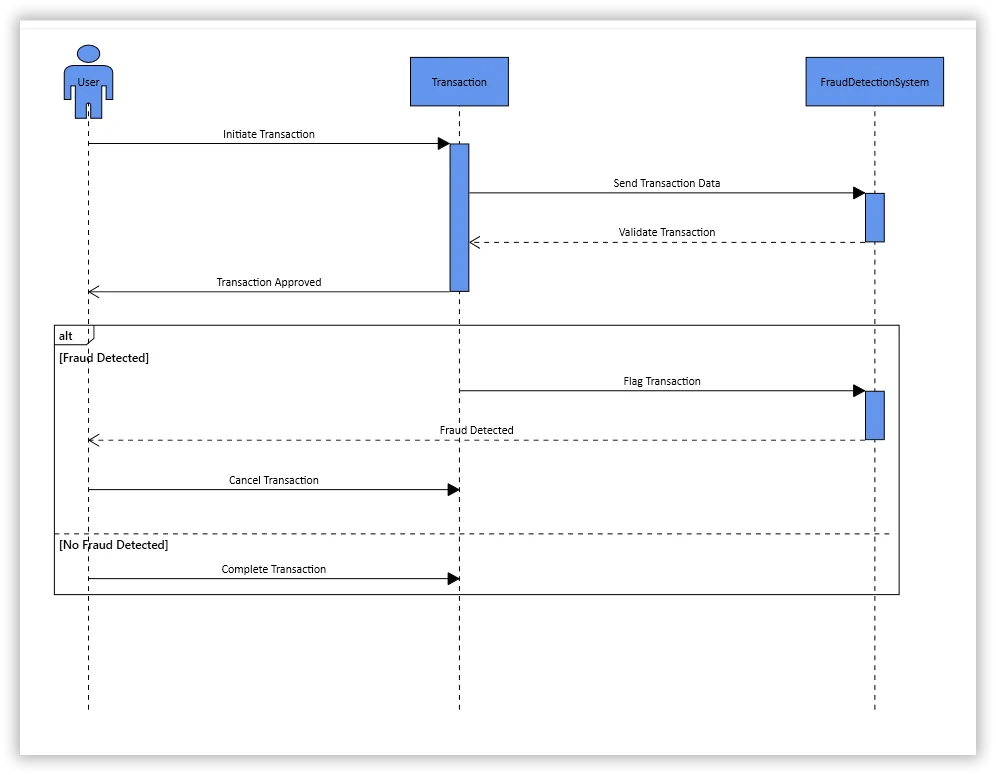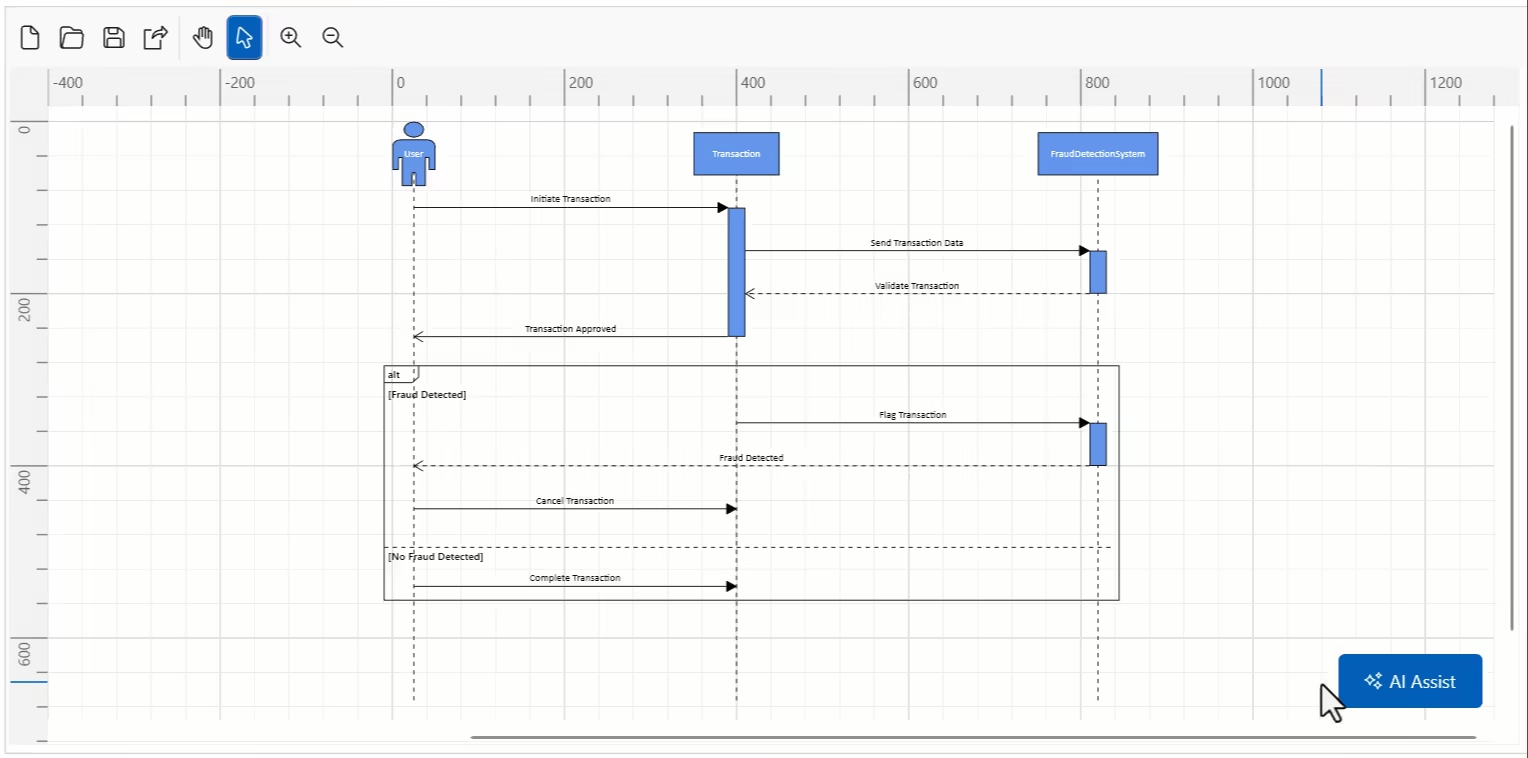
In 2025 Volume 1, WPF developers can enjoy a new Avatar View control, UML sequence importing and exporting, and 3x faster text searching in the PDF Viewer.
The WPF Avatar View control displays a graphical representation of a user’s image. The view can be customized by adding an image, a gradient background, a group view, and more.
![]()
This feature enables users to stop the AI’s response generation midway, providing better control during interactions.
The UML Sequence diagram visually represents how a set of objects interact in a process over time. This feature easily generates these diagrams automatically from model data, streamlining the visualization of interactions between objects in a system. It dynamically creates lifelines, messages, and activation boxes based on the provided data, reducing manual effort and ensuring accuracy.

The Mermaid’s syntax is a markdown-inspired text-based language designed to define diagrams through simple, readable commands. This feature allows users to create UML Sequence diagrams from Mermaid syntax and export them back, simplifying visualization, sharing, editing, and cross-platform use. Users can also use AI assistants to generate Mermaid syntax for these diagrams and directly import it into the WPF Diagram component.

The PDF Viewer’s text search functionality has been significantly improved, ensuring faster and more accurate searches within PDF documents. This enhancement is especially beneficial for businesses that need to extract specific data, such as financial statistics or customer details, from PDF reports. With a 3x faster search speed for a 1000-page document, users can quickly and accurately retrieve critical information, minimizing the risk of errors.
The Syncfusion® Excel Library is now significantly faster when creating, reading, and saving Excel workbooks. The latest optimizations have improved processing speed across various data types, making operations on large datasets more efficient.
Performance gains (150 rows × 10,000 columns)
PDF documents can now be created in compliance with the PDF/UA-2 accessibility standard, ensuring they meet the latest accessibility requirements. This enhancement improves usability for assistive technologies, making PDFs more accessible to all users.

Generated PDFs now feature well-structured and properly tagged content, enhancing accessibility and compliance with industry standards. This improves navigation and content interpretation for users relying on assistive technologies.

The PDF Library now supports the ZUGFeRD 2.3.2 standard, enabling seamless creation and processing of electronic invoices. This feature integrates both human-readable and machine-readable data, ensuring compatibility with e-invoicing systems and regulatory compliance.

Users can now define custom role mappings for tagged elements in PDFs, offering greater flexibility in document accessibility. This allows tag roles to be customized to better align with specific accessibility requirements and document structures.

This functionality introduces hatch brush patterns in PDF graphics, allowing users to fill shapes, text, and other graphical elements with customizable hatch patterns. It enhances the visual presentation of PDF content and provides design flexibility.

This security enhancement allows users to restrict HTTP requests during the HTML-to-PDF conversion process. By blocking external resource access, it ensures greater control over data security, preventing1 unauthorized content retrieval and enhancing privacy.
The PowerPoint Library now includes a setting to convert shapes into editable PDF text form fields during PowerPoint-to-PDF conversion. This allows users to generate interactive PDFs for surveys, applications, and feedback forms, enabling digital form-filling.

The .NET Word Library now allows you to programmatically create, edit, and remove SmartArt graphics in Word documents, making it easy to generate process flows and structured documents.

With this feature, SmartArt graphics in Word documents are accurately converted to PDF or image formats while preserving their structure and appearance. This ensures clear communication in presentations and reports sharing across different devices.

Improved the performance of converting large TXT files to Word documents, achieving 10x faster conversion for files with 100,000+ lines, enabling seamless processing of extensive text content.
